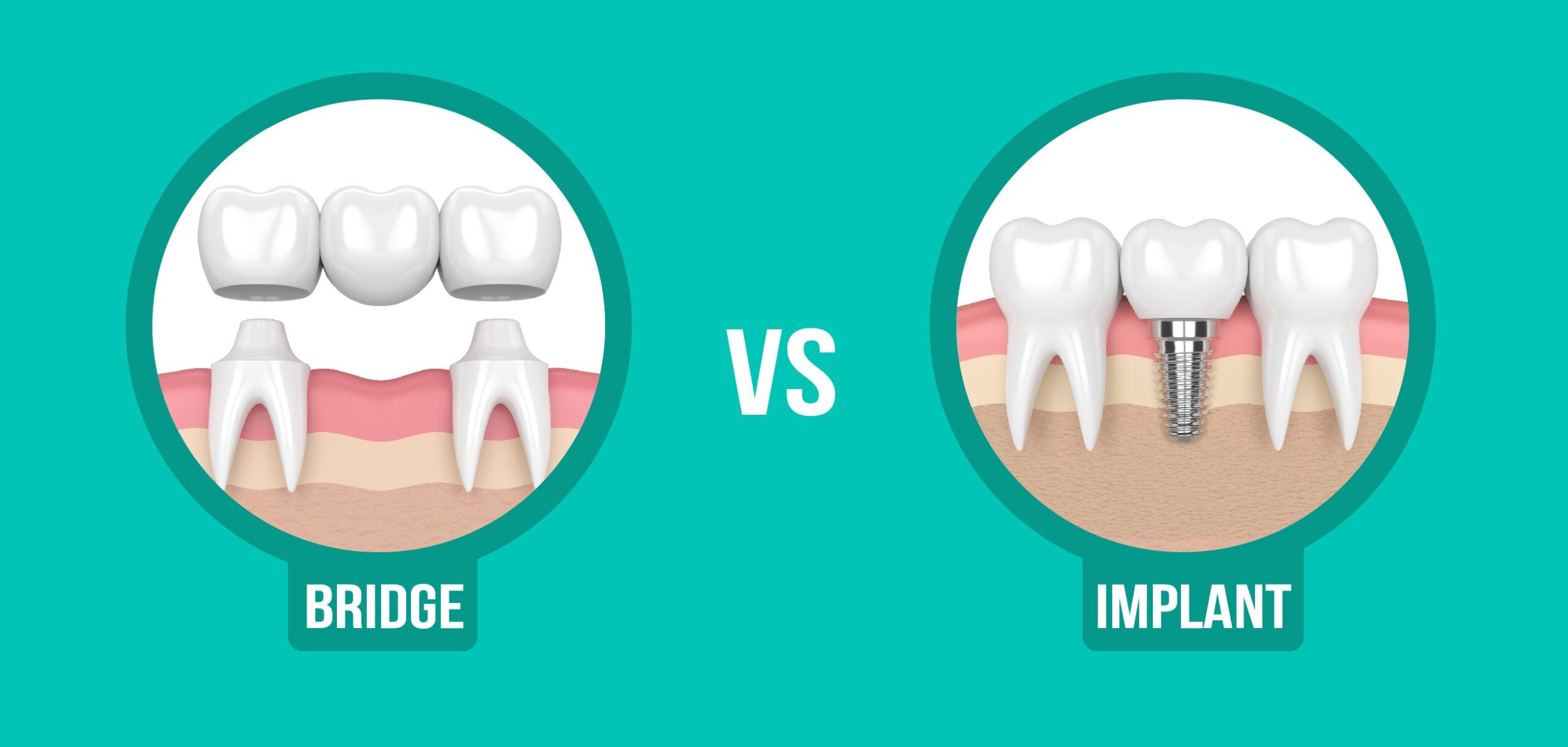Dental implants and bridges are two common options for replacing missing teeth. Each method has its own advantages and disadvantages, and the best option for you will depend on your specific dental needs and preferences. In this blog post, we’ll compare dental implants vs. bridges to help you make an informed decision about which option is right for you.
What are Dental Implants?
Dental implants are artificial tooth roots that are inserted into the jawbone to support a replacement tooth. The implant itself is made of titanium, a biocompatible material that is well-tolerated by the human body. The implant fuses with the jawbone over time, creating a strong and stable foundation for the replacement tooth.
One of the biggest advantages of dental implants is that they look and feel like natural teeth. Because the implant is fused to the jawbone, it provides a stable and permanent base for the replacement tooth, so you can eat, speak, and smile with confidence. Dental implants also help prevent bone loss in the jaw, which can occur when teeth are missing.
However, dental implants are not suitable for everyone. They require a surgical procedure, which can be time-consuming and expensive. Patients with certain medical conditions or inadequate bone density may not be good candidates for dental implants. Additionally, the placement of dental implants may require several visits to the dentist and a longer healing time than other tooth replacement options.
What are Dental Bridges?
Dental bridges are another option for replacing missing teeth. Bridges consist of one or more replacement teeth that are held in place by crowns that are placed over the adjacent teeth. The crowns serve as anchors for the replacement teeth, creating a stable and durable replacement for missing teeth.
One of the advantages of dental bridges is that they are a more affordable option than dental implants. They can also be completed in fewer visits to the dentist, as they do not require surgery or the placement of an implant.
However, dental bridges also have some disadvantages. The adjacent teeth must be prepared to hold the crowns in place, which can weaken the teeth and make them more susceptible to decay and other dental problems. Additionally, because the bridge is not implanted in the jaw, it does not prevent bone loss in the jaw, which can cause changes to the shape and appearance of the face over time.
Dental Implants vs. Bridges: Which Is Right for You?
When deciding between dental implants and bridges, there are several factors to consider, including your dental health, budget, and personal preferences. Your dentist can help you determine which option is best for you based on your individual needs.
If you have one or more missing teeth and are considering dental implants, your dentist will conduct a thorough evaluation to determine if you are a good candidate for the procedure. This may include a comprehensive dental exam, X-rays, and other diagnostic tests. If you are a good candidate, your dentist will work with you to develop a treatment plan that meets your needs and fits your budget.
If you are considering dental bridges, your dentist will evaluate the health of your adjacent teeth to determine if they can support the crowns that are needed to hold the bridge in place. Your dentist will also work with you to select the most appropriate type of bridge and discuss the benefits and risks associated with the procedure.
How Dental Implants are being done?
The first step in the implant process is a comprehensive dental exam and imaging to determine if the patient is a good candidate for the procedure. Patients who have significant bone loss or periodontal disease may require additional procedures before implant placement, such as bone grafting or gum disease treatment.
The next step is the placement of the implant itself. This involves creating a small incision in the gums to expose the jawbone and then drilling a hole into the bone to place the implant. Once the implant is in place, the gums are sutured shut, and the healing process begins.
Over the next several months, the implant will fuse with the jawbone in a process called osseointegration. During this time, the patient may be given a temporary replacement tooth to wear while the implant integrates.
Once the implant has fully integrated with the jawbone, a small abutment is attached to the post. The abutment serves as the connection point between the implant and the replacement tooth. After the abutment is placed, the patient will undergo another brief healing period to allow the gums to heal around the abutment.
Finally, the replacement tooth is attached to the abutment, completing the implant process. The replacement tooth is custom-made to match the color and shape of the patient’s natural teeth, and it is attached securely to the abutment to provide a strong and stable tooth replacement option.
Overall, dental implants are a complex and multi-step process that requires careful planning, precision, and collaboration between dental professionals. With proper care and maintenance, dental implants can last a lifetime and provide patients with a natural-looking and functional tooth replacement option.

